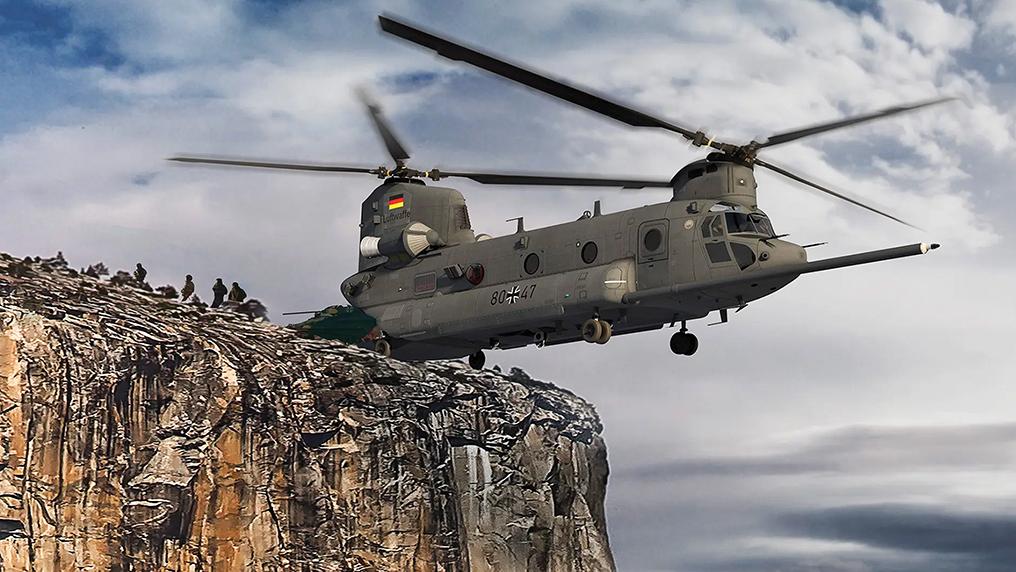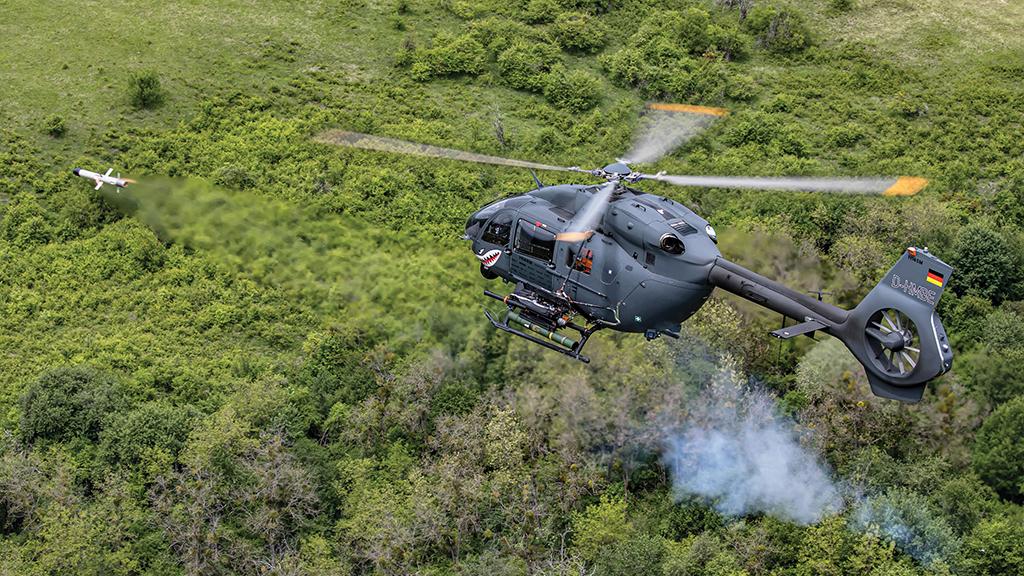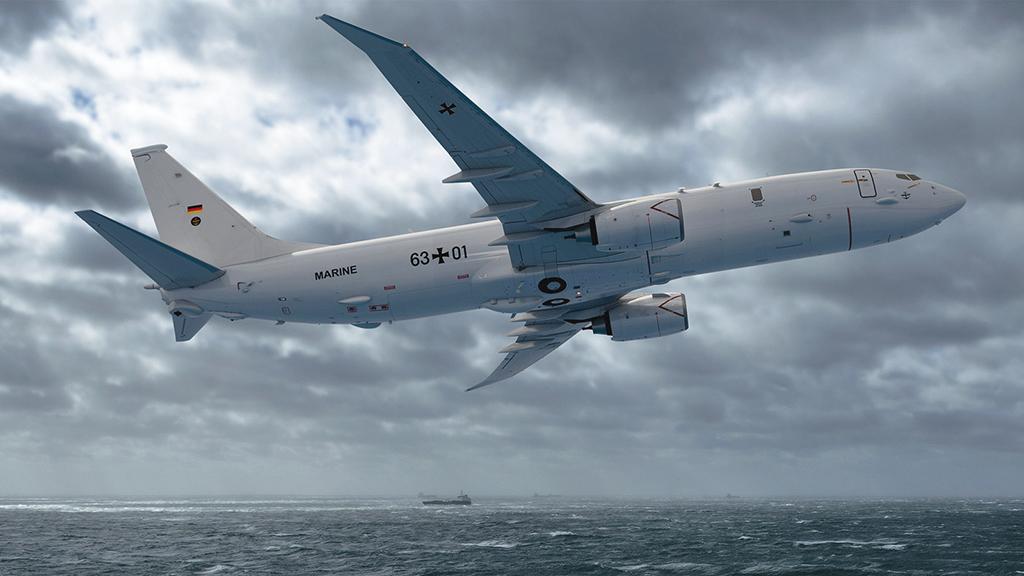
Aerospace programs are set to take the biggest portion of Germany’s €100 billion ($107 billion) defense modernization plan, which ministers hope will reverse the slow and painful decline of the country’s armed forces.
- €30 billion of special fund is allocated to air force programs
- Berlin plans to double itsP-8 maritime patroller fleet
- Boeing’s Chinook selected in heavy-lift helicopter face-off with CH-53K
Lawmakers gave the green light for the special fund on June 3, paving the way for acquisition programs that had previously struggled to navigate through the country’s monolithic budgetary and procurement processes.
And the special fund is just the beginning. The Russian invasion of Ukraine, German Defense Minister Christine Lambrecht said on June 3, “makes us painfully aware of a long-suppressed fact: If you want to live in freedom, you need military strength to defend this freedom.”
In addition to the €100 billion, the lawmakers also approved plans to accelerate annual budget increases to meet NATO’s defense spending target of 2% of GDP. By comparison, the Merkel administration had pledged to raise spending to reach just 1.5% of GDP by 2024.
The bulk of the special fund—approximately €33 billion—will be spent on aviation programs, largely replacing aging Cold War-era fleets. That includes a generation of types that have mostly been retired from the inventories of Germany’s neighbors but which Berlin has been forced to retain due to swingeing budget cuts over the last two decades. The result is what Lambrecht called “a huge investment backlog.”
This, she said, had eroded the German armed forces’ “core task of national and alliance defense.”
Among the programs benefiting from the fund will be the controversial procurement of the Lockheed Martin F-35 Joint Strike Fighter as the country’s future platform for the NATO nuclear deterrence mission.
The F-35, along with an advanced development of the Eurofighter Typhoon, will replace the long-serving Panavia Tornado.

Selection of the F-35, announced in March, had been considered untenable due to political sensitivities with France about the Future Combat Air System (FCAS) partnership. Paris had lobbied Berlin not to purchase the F-35, hinting that Germany could be kicked out of the FCAS program if it did so. The French feared that the F-35 would essentially soak up much of the funding destined for the FCAS. That tension was one of the reasons behind the Merkel administration’s decision to select Boeing’s F/A-18 Super Hornet and EA-18 Growler.
New circumstances—the arrival of a new government at the end of last year, the creation of the €100 billion special fund and increased annual budgets—give Germany the ability to support both the FCAS and the F-35. Chancellor Olaf Scholz said he is firmly committed to European cooperative programs, in particular the FCAS, when he announced plans for the special fund in February.
The fund will, however, not support the procurement of a new fleet of advanced Eurofighter Typhoons to take on the conventional attack roles of the Tornado fleet. Some 55 additional Eurofighters were planned for this role. Airbus has called on Berlin to provide funding to support development of those aircraft, dubbed Tranche 5-model aircraft. But this funding is not mentioned in the special fund’s documentation.
The fund will, however, support development of a specialized electronic attack version of the aircraft, called the Eurofighter ECR, which will be worked on by Airbus and Hensoldt and will allow Germany to meet a long-standing NATO commitment to provide the alliance with an airborne electronic attack and jamming capability.
According to German media reports, the special fund will support five years of the FCAS program, with the remainder of Germany’s share of the project to be funded from the regular defense budget.
The fund will also support growth in Germany’s maritime patrol aircraft fleet. After contracting for five Boeing P-8 Poseidons last June to replace the Lockheed P-3 Orion, Berlin is considering buying as many as seven more P-8s. That procurement would likely also mean the end of joint work with France on development of a future maritime patroller, called the Maritime Airborne Warfare System.
The special fund is paying for replacement of the German Air Force’s fleet of Sikorsky CH-53G Stallion transport helicopters, too, in service since the 1970s. Boeing’s CH-47F Chinook was announced as the selected candidate for Germany’s heavy transport helicopter requirement after a long-running face-off against Sikorsky’s CH-53K King Stallion. Germany plans to purchase 60 Block II-model Chinooks, making it the second foreign customer for the Block II after the UK and its largest European customer.
Germany’s Chinooks will have the standard fuel-tank configuration but will feature an aerial refueling probe to extend their range. This will open up a new capability for the German Air Force, which will operate the helicopters in the troop transport and combat search-and-rescue role.
Defense officials say the Chinook was selected because it is a “tried and trusted” platform. But there were other good reasons as well, they say. It has a lower per-unit price than the CH-53K, there are fewer technical, time and financial risks associated with the platform, and the CH-47 is already in wide use with Germany’s neighbors.
“With [the Chinook], we are strengthening our ability to cooperate in Europe. . . . In addition, we are getting a larger fleet here and gaining flexibility,” Lambrecht said.
The fund is also expected to pay for a new fleet of light utility helicopters that could take on training, liaison and light attack missions previously performed by the Bolkow Bo.105.

The German Air Force is operating 15 Airbus H145M rotorcraft for use by the country’s special forces. But defense officials have previously outlined plans to purchase up to 60 additional aircraft for the army. Airbus has been advancing development of the H145M with new capabilities—perhaps with the requirement in mind—including the ability to fire the Rafael Spike anti-armor missile.
The special fund will also be used to enhance ground-based air defense capabilities. But there is no sign of a resurgence in interest in development of the TLVS system, based on the Lockheed Martin/MBDA Medium Extended-Air Defense System, on which Berlin opted to further work as a replacement for the Patriot missile system in 2015. Germany did not proceed with the procurement, and the program was finally put on ice in early 2021.
Money will be allocated to arm Germany’s new fleet of leased Israel Aerospace Industries Heron TP uncrewed aircraft systems as well. No details have emerged about what specific weapons would be included.
In addition, funding will be provided for a space-based early warning system for ballistic missile defense, work that is linked to the European Timely Warning and Interception with Space-based Theater surveillance (Twister) program—a project being developed within the European Union Permanent Structured Cooperation framework. Germany became a participant in Twister in late 2020.
More conspicuous is the one program’s absence from the list: a decision on the Mk. 3 upgrade program for the European Tiger attack helicopter. As Aviation Week previously reported, Germany has not yet joined the Mk. 3 program, and a decision is pending about the future of the German version of the platform, which is radically different from its French and Spanish counterparts (AW&ST May 30-June 12, p. 28). Germany has inquired with the U.S. government about pricing and availability for the Boeing AH-64 Apache, but that apparent interest has not progressed. Berlin has been notified by the Tiger partners that it has until the summer to decide whether to join the program on the same terms.
Meanwhile, several key programs for which funding was secured last year are proceeding apace. They include the Quadriga program for new-build Eurofighter Typhoons to replace the Tranche 1 model in service with the German Air Force and the Bombardier Global 6000 business jet-based Pegasus signals-intelligence-gathering platform. Germany has also committed funding for development and delivery of the Eurodrone medium-altitude, long-endurance uncrewed aircraft system in cooperation with France, Italy and Spain. First deliveries are planned for the end of the decade.
“With the special fund, we are now making a big impact—and will close our most urgent capability gaps over a wide range and permanently,” Lambrecht said.

